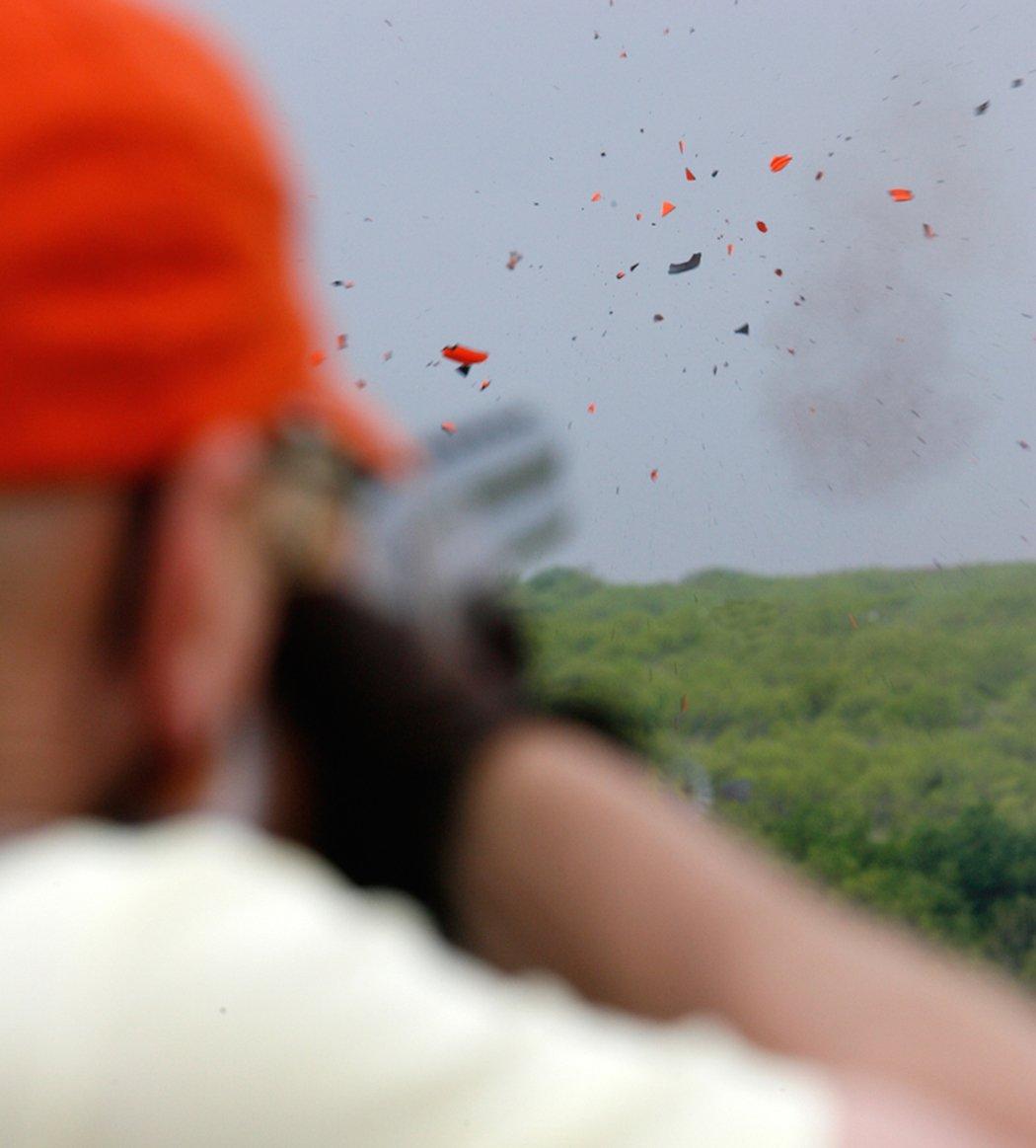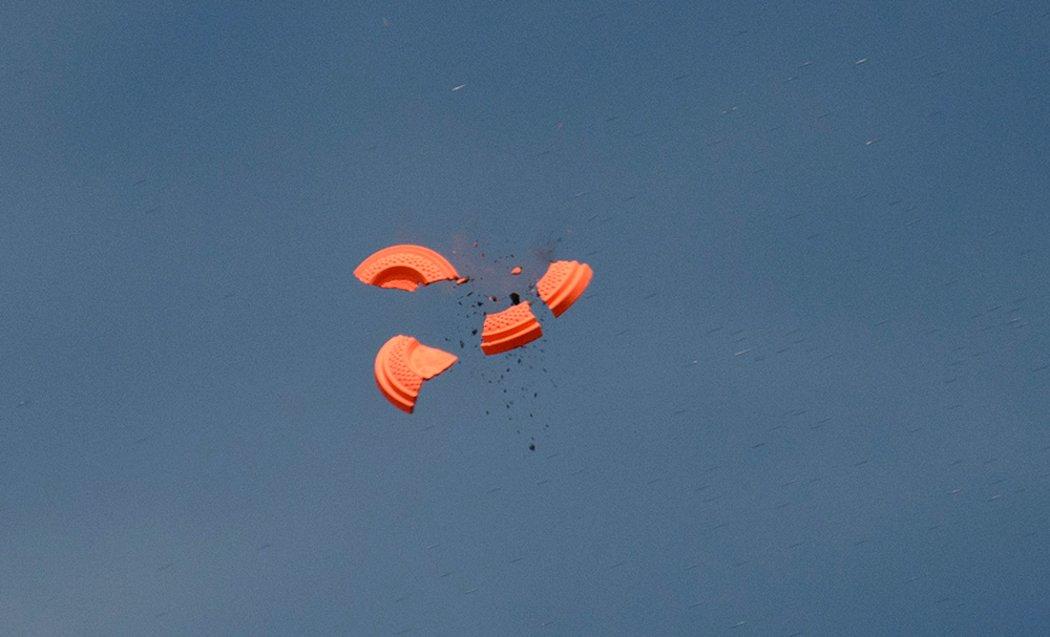Shatter More Clay Pigeons with These Tips
I was very nervous about my first dove hunt. I was in my early 20s at the time and had never shot anything that moved. When I was a child, my father and I spent sunny afternoons shooting cans and other small objects with his .22 rifle, but I had very little experience shooting a shotgun. I didn't want to go on the dove hunt and embarrass myself in front of all those strangers by missing every dove I tried to shoot.
When I expressed my concern to my friend and mentor John Phillips, he said, "Stephy, don't worry about it. I'll take you down to White Oak Plantation near Tuskegee, Alabama, and let Mathew Pitman, a Level II sporting-clays instructor, teach you how to shoot sporting clays. After a day with him, you'll knock those doves out of the sky as quickly as you can spot them."
One Saturday afternoon before my dove hunt we met up with Pitman at White Oak Plantation for a couple hours of sporting-clays lessons.
Safety First
Pitman walked up to me with a pair of goggles and earplugs in his hands. "Safety is your first concern," Pitman insisted. "You must keep your goggles on and your earplugs in the entire time you shoot. Also be sure to wear shirts with tight sleeves. Baggy sleeves can get caught on your gun as you mount it."
We then loaded up into the golf cart, placed our shotguns in their holders and drove to the sporting-clays course. We pulled up to the station and stepped up onto the platform. "Again, the most important thing to remember when shooting sporting clays is safety," Pitman reminded me. "Keep your gun open and empty at all times. The only time your gun should be off safety and loaded with shells is when you're in the station and ready to shoot. Even then, do not keep more than two shells in your gun at a time."
Proper Gun Mount
He said next to safety, proper gun mount determines sporting-clays success. "Put your head down on the gun soundly. Make sure you look right down the barrel of the gun so all you can see is the bead on the end of the barrel. Beginners often raise their heads off their guns to see the clays break or in anticipation of the recoil. If you raise your head, you'll miss the shot. Keep your head down on that gun at all times."
He also emphasized that when shooting sporting clays, you shouldn't aim the shotgun like you would a rifle, but instead, you should point the shotgun at the target. "When you point your shotgun, forget about the gun," he said. The only thing you should focus on is your target. Shut one eye to make sure you mounted your gun properly before opening both eyes and focusing on the target's leading edge."
Shooting sporting clays is a great way to practice for bird hunting. The different clays represent the various types of birds you may hunt. White Oak's tower stations represent a duck-hunting scene. At these stations, the shooter stands in a tower over the lake and shoots clays, which fly from the left to the right or from the right to the left much like ducks flying over the water. At other stations, the clays come out from beneath the shooter's feet just as if hunting dogs have flushed quail or grouse out from the underbrush. At some stations, the clays fly far above the shooter's head like pheasants, and at other stations, the clays launch toward the shooter and pause like doves.
Start Easy
"I suggest beginning shooters bust their first clay at a dove station because the clay pauses in the air long enough for the amateur shooter to get off a shot," Pitman said. "Our rabbit station offers the most challenging shots. The clay bounces inconsistently across the ground much like a rabbit. Many of our best shooters mess up at this station. The secret to busting the rabbit clays is to shoot them when they bounce up in the air."
Sporting clays keep the hunter in tune when bird and rabbit-hunting seasons end. "When you shoot sporting clays, imagine that the clay is a bird and point your gun to where you imagine the beak. If the clay flies over your head or begins to fall, you won't see its leading edge. So, aim where you imagine the bird's feet. However, you must keep the gun moving on crossing birds or quartering targets. If you lose the movement, you'll miss the target. Always anticipate the clay's destination and shoot just before it gets to that point."
Practice, Practice, Practice
Pitman then handed me the shotgun. "Don't shoot anything yet," he said. "Just practice mounting the gun. Get familiar with it." So, I lifted the gun from my side to my shoulder and placed my cheek firmly against the stock. After receiving Pitman's approval, I practiced this transition several times. My muscles began to give out beneath the weight of the shotgun.
Noticing my quivering arms, Pitman told me that many of the women he instructs experience difficulty holding the shotgun up to their shoulders for an extended period of time. "To shoot sporting clays, you need to build up your arm-muscle strength. A man has no advantage over a woman when shooting sporting clays except for upper body strength. With a little practice, that bridge can easily be crossed," he said. "I suggest that you practice mounting your gun in front of a mirror to check your position. You can also use the line where the wall meets the ceiling in your house. Practice pointing at that line over and over again with your shotgun. If you mount your gun 10 times today, then mount it 15 times tomorrow. Raise it nice and smoothly. Just lift the gun and push it forward. These types of exercises will increase your arm strength."
Personal Preference
Pitman recommended that beginning shooters start off with an automatic shotgun. "An automatic shotgun has less recoil, therefore the shooter will less likely raise his head in anticipation of the jolt, which causes him to miss the shot. But most importantly, you need to shoot the gun that is the most comfortable for you.
"A lot of people talk about gun fit. They say the gun needs to fit you. I say yes and no. So many guns are sold to hunters each year who could care less about gun fit, but who still learn to shoot the gun. Very few people know how to properly fit a gun. You can learn how to shoot any gun. If it is too short, you can slide your head down the back of the gun. If the gun is too long, it may be uncomfortable, but you can still shoot it. Too many people successfully shoot guns that do not properly fit them every day. As long as you mount a gun correctly, you can shoot it."
Store Stuff: Camlocker Truck Bed Toolboxes
In Pitman's opinion, one of the best guns to start off with is a 28-gauge shotgun because it patterns tightly like a .410, yet it shoots more pellets. An automatic 12-gauge shotgun is also one of the best guns for sporting clays. Select your gun according to your personal preference.
Some people prefer to shoot an over-and-under or a side-by-side shotgun, but these guns have more recoil. "The advantage of an over-and-under shotgun to the automatic shotgun is the choke," he said. "You can choose from several chokes such as the cylinder, skeet, improved, modified and or full choke with the cylinder being the most open. I suggest that you choose one choke and stick with it. I shoot a modified choke. With a modified choke, you can shoot pretty much anything on a sporting-clays course. You don't want to think or change up too much in this game, which is why I only shoot with one type of choke."
On the day of my instruction, I shot a 20-gauge shotgun with a No. 8 shot. "In clays you can use a No. 71/2, No. 8 or No. 9 shot. The No. 9-size pellets are better for closer targets such as rabbits, while the No. 7 1/2's are better for longer targets. Find the lightest load you can use that will work in your gun."
Pitman then instructed me on the proper foot stance. "Stand with your feet shoulder-width apart," he said. "You should stand how you feel most comfortable, but just be sure not to twist too far to the right."
With all this said, I determined my game plan, stepped into position, raised my gun and shouted, "pull!" The clay launched toward me and paused just as it had before. I shot and missed much to my disappointment.
"That's okay," Pitman said. "Whenever you miss a target, try something different. Shoot further in front of the target, or drop back, and shoot right at it. Whatever you do, don't shoot behind the target. You'll never hit the clay if you shoot behind it, but you still may break the clay if you shoot too far in front of it because the shot will spread out after it is fired. If you are going to miss the clay, it is better to miss it by shooting too far in front of it. This way, you at least have the right concept in mind."
I heeded Pitman's advice. I placed my head down on my gun, arranged my feet and called, "pull." This time I anticipated the clay's direction, shot right at its leading edge and busted that clay. Exhilarated and anxious to try another, I set up and called, "pull," again. I kept my gun on the target's leading edge and busted another clay.
"To get started, you must see targets break," he said. "The more you see targets break, the more the pattern will become memory. You need to be able to close your eyes and picture the shot. To get to where you can shoot well enough to go on a dove hunt and not be embarrassed, I suggest an hour's worth of instruction per week for six weeks. You will spend the first hour of instruction to get used to your gun. Toward the end of the six weeks, you will be shooting consistently."
[Editor's note: This Realtree.com article was published March 3, 2016.]
Go here for more Realtree guns and shooting. Follow us on Facebook.










